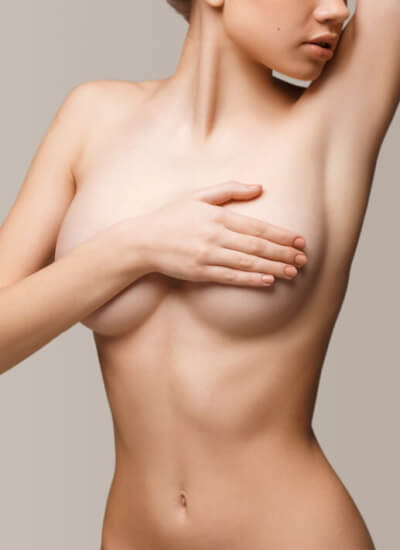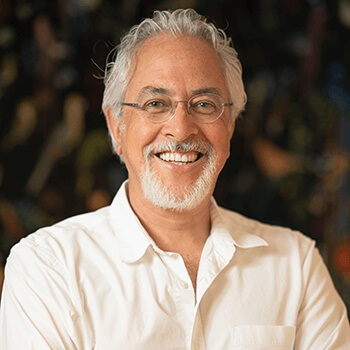Inverted nipples
Facts on inverted nipples

| Treatment methods: | Everting the nipples |
| Treatment duration: | 30-60 min |
| Anaesthesia: | Local anaesthetic |
| Post-treatment: | No pressure on nipples, bandage |
| Removal of sutures: | Absorbable sutures used |
| Presentable: | Immediately |
The nipple is a key part of a shapely, feminine breast. However, some women’s nipples do not protrude outwards and are instead retracted into the breast. Many women with so-called ‘inverted nipples’ perceive them to be major flaws that can severely impact their self-confidence. This situation is also a common cause of issues when it comes to nursing.
In most cases, inverted nipples are a congenital condition: the women affected have shorter mammary ducts, which transport breast milk from the mammary gland to the nipple. However, the surgery to correct inverted nipples is usually a successful remedy for this issue. In the procedure, the nipple is separated from the tissue holding it in the retracted position.
At Central Aesthetics, we offer you a range of treatments to combat inverted nipples. In some circumstances, patients can even retain the ability to breastfeed, meaning that even women hoping to have children and breastfeed could still undergo treatment. In our practice, we would be happy to advise you personally on the inverted nipple correction procedures open to you.
Frequently asked questions on inverted nipples
As noted above, inverted nipples are usually the result of a congenital condition in which the woman's milk ducts are too short, meaning that the nipples cannot protrude as normal. The condition can also develop, or become more prominent, during puberty. However, some women only develop the condition later or for a short period. In such cases, an inverted nipple could be a sign of another breast condition, in which case the causes of the inversion should be determined by a doctor.
This procedure is suitable for any patients whose nipples have been inverted since their breasts began to develop. The shortened tissue is separated and the nipple fixed in the desired position. Corrective surgery on inverted nipples can be a major relief, especially for women who suffer particularly badly from markedly inverted nipples.
On the other hand, if the inverted nipples only develop later and there is reason to suspect another condition may be the cause, the condition behind the inversion should firstly be identified and treated accordingly.
For women who wish to have children, it is worth exhausting less intrusive forms of treatment before opting for corrective surgery to remedy inverted nipples. Of course, we at Central Aesthetics would be happy to advise you personally.
We differentiate between two surgical methods to correct inverted nipples. In the first variant, the shortened milk ducts are separated from the surrounding connective tissue. This allows the nipple to evert (turn to the outside), at which point we fix it in place with sutures. During the healing phase, the scar tissue around the nipple also pulls together, providing additional stability.
In the second method, the patient retains their milk ducts and therefore the ability to breastfeed. To do this, we separate the nipple at the base from the underlying connective tissue, delicately lifting it away from the mammary gland. This means that the milk ducts remain connected to the nipple. The surgeon then uses sutures to fix the nipple in its new position.
To avoid complications in the nipple correction surgery, it’s important that you’re generally in good health. This is why we carry out a series of preliminary examinations and give you important tips on how to prepare for the surgery. If you smoke, you should avoid smoking for four weeks – or at least heavily reduce your intake. You should also temporarily stop taking any anticoagulant medication before the procedure.
Before surgery to correct inverted nipples, you will be given a personal consultation outlining the procedure as well as the risks and prospects. The surgeon will then work with you to choose a suitable surgical method and form of anaesthesia. In general, we carry out inverted nipple corrections on an outpatient basis under local anaesthetic, and usually without twilight anaesthetic.
The operation itself starts with administration of the anaesthetic, after which the surgeon makes the incisions around the nipple. In the next stage, the surgeon disconnects the shortened milk ducts or separates the underlying tissue from the nipple in order to bring it forward. The nipple is then sutured in position, and a protective bandage is applied. In some cases, a plastic cylinder is used to hold the everted nipple in position for the first few days following the surgery. After the operation, you can leave the practice and go about your day-to-day tasks as normal.
After the procedure, you should look after your body and only sleep on your back at first. You should avoid placing any pressure on the nipples to begin with, and so shouldn’t wear tight-fitting clothing or bras. Furthermore, we advise you to avoid exercise, saunas, tanning beds and sunbathing for the first 4–6 weeks.
In surgery to correct inverted nipples, we normally make a 5mm incision so close to the base of the nipple that the resulting scar usually can’t be seen by the naked eye.
Whether you’ll still be able to breastfeed after surgery to correct inverted nipples depends above all on the surgical method used. Where possible, we offer young women who wish to have children the option of a procedure where the milk ducts don’t need to be severed. In fact, for many patients, this actually gives them the ability to breastfeed their child for the first time.
In general, our procedures to treat inverted nipples achieve long-lasting results. To prevent the nipple from inverting again, we also fix the nipple in place with sutures after the surgery. During the healing phase, the scar tissue around the nipple also pulls together, providing additional stability. Despite this, in rare cases, the nipple may become inverted once again – and may necessitate a further correction.
When carried out properly, surgery to correct inverted nipples is low-risk. Of course, as with all operations, isolated cases see complications such as infections, secondary haemorrhages and wound healing deficits. To begin with, patients often experience sensory disturbances in the nipple area. In isolated cases, the nipples’ sensitivity can also be temporarily impaired by the surgery.
The treated areas often remain swollen after the operation and can occasionally display some bruising. However, such side effects are entirely normal and should subside quickly on their own. Any initial asymmetry should also resolve itself over the course of time. However, regular checks should be carried out during the healing phase to make sure that the treatment is successful.
The precise treatment costs can vary somewhat depending on the surgical technique used. Get in touch with us directly: we’d be happy to determine the precise costs involved in your individual case in a consultation appointment.
Address
Central Aesthetics by Dr. Deb
Mainzer Landstraße 65
60329 Frankfurt am Main
Opening hours
| Monday | 8:30am - 6:00pm |
| Tuesday | 8:30am - 6:00pm |
| Wednesday | 8:30am - 6:00pm |
| Thursday | 8:30am - 6:00pm |
| Friday | 8:30am - 6:00pm |
and by appointment





